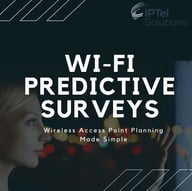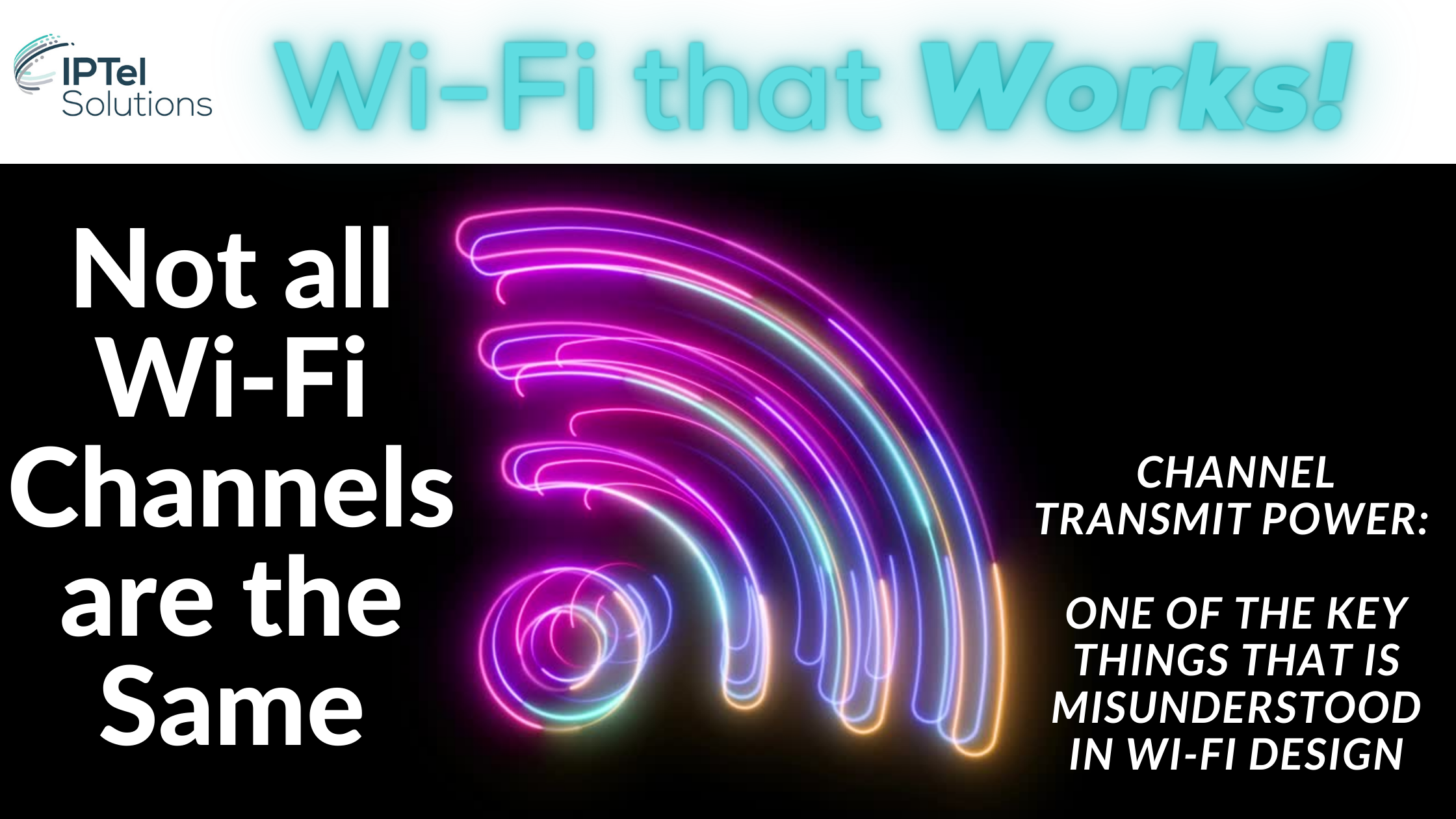When designing a new wireless network, RF power levels are often overlooked or misunderstood.
Depending on the type of deployment, power levels can have a great impact on client performance and reliability. And here's the catch - not all Wi-Fi channels run at the same power!
Wi-Fi Access Point Transmit Power
The strange thing is that the allowed power levels on different channels are not all the same. This seems pretty strange to the newcomer; and different regulatory domains enforce different power caps on different channels.
While the 2.4GHz channels are all the same transmit power, there are different groups of channels in the 5GHz spectrum and they're allowed to do slightly different things.
Some are aimed at external coverage and so are allowed a higher transmit power, and some are designed for internal coverage and so run at lower transmit powers.
Explored in another blog was the related concept of having enough APs and ensuring that the ambient transmit power was in bounds - and is relatively matched for the clients in use.
ASSOCIATED BLOGS:
Cisco Transmit Power Levels
Cisco Prime displays the APs from power 1 (maximum) to their minimum powers - its just that one AP might be running at a much higher power than the AP next to it, which is on a different channel.
Taking this into account it means that if you don't use some sort of power caps you'll have APs which are running at a much higher power than the clients can transmit back at - and that leads to one way transmission problems.
ASSOCIATED BLOGS:
AP Transmit Power: Design Guidelines
In order to improve Wi-Fi performance, you need a working knowledge that there are different power l.png?width=189&name=Access%20Point%20Power%20Caps%20(Instagram).png) evels on different channels means that your Wi-Fi design should plan your network to run at the weakest power across your APs. Further, if you're looking to take advantage of adaptive algorithms such as Transmit Power Control (TPC), you should allow for some spare capacity again.
evels on different channels means that your Wi-Fi design should plan your network to run at the weakest power across your APs. Further, if you're looking to take advantage of adaptive algorithms such as Transmit Power Control (TPC), you should allow for some spare capacity again.
In practice, yes this will mean you have more APs. It does however mean that your RF powers on your APs will be smoother, and you can support a larger number of clients.
If you don't take into account that powers are different on different channels, you'll have a disparity of powers running on your APs and find that you have sticky client issues and clients dropping out.
ASSOCIATED BLOGS:
RF Surveys
RF Surveys are where your design takes shape. They take a number of forms and these follow in a logical  sequence, from a Wi-Fi Predictive Design, through to a Wi-Fi Pre-deployment Survey (AP-on-a-stick) survey through to a post-install confirmation survey.
sequence, from a Wi-Fi Predictive Design, through to a Wi-Fi Pre-deployment Survey (AP-on-a-stick) survey through to a post-install confirmation survey.
When you design, you need to understand the environment, the type of clients and the channels you're going to be using - all these are factors in how you design.
RF Surveys are particularly important for clients which have to roam in real time, such as Wi-Fi phones, or warehouse barcode scanners.
ASSOCIATED BLOG:
Wi-Fi Channel Power: Summary
Wi-Fi is a tricky technology to design, install, tune - and fault find.
One of the key reasons it doesn't work in practice is a lack of understanding of the underlying physics. Radio Frequency waves only travel so far, and through attenuating objects they may be stopped or reflected.
In designing for a Wi-Fi deployment, you need to take account of what your proposed Wi-Fi channels can run at. Designing for more than this and you're designing in failure from the start.
RELATED BLOGS:
The real kicker is that the transmit power on different channels is not uniform - it's different in different regulatory domains (eg countries). What might work in the US may not work in Australia.






.gif)
.gif)